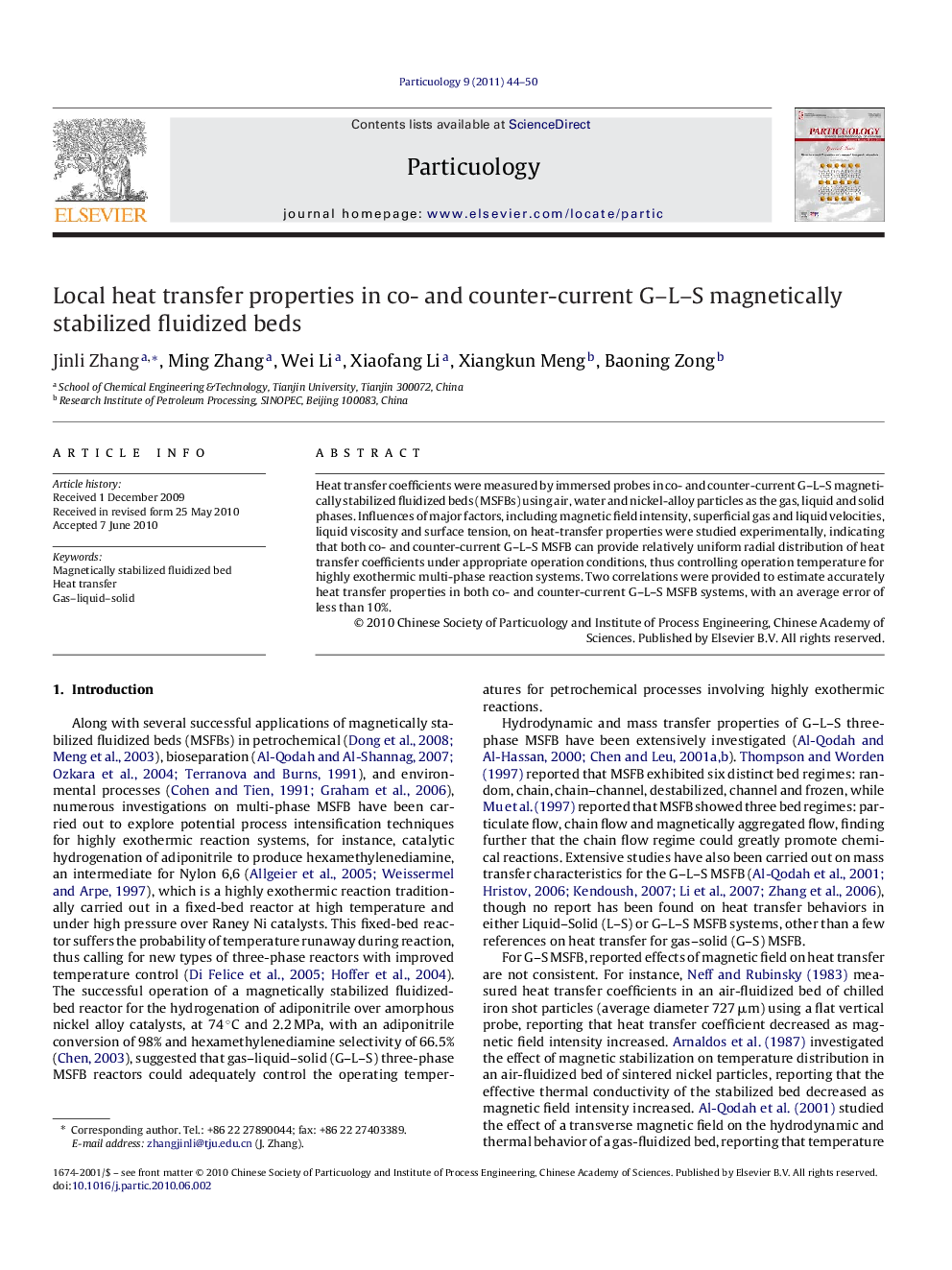| Article ID | Journal | Published Year | Pages | File Type |
|---|---|---|---|---|
| 672557 | Particuology | 2011 | 7 Pages |
Heat transfer coefficients were measured by immersed probes in co- and counter-current G–L–S magnetically stabilized fluidized beds (MSFBs) using air, water and nickel-alloy particles as the gas, liquid and solid phases. Influences of major factors, including magnetic field intensity, superficial gas and liquid velocities, liquid viscosity and surface tension, on heat-transfer properties were studied experimentally, indicating that both co- and counter-current G–L–S MSFB can provide relatively uniform radial distribution of heat transfer coefficients under appropriate operation conditions, thus controlling operation temperature for highly exothermic multi-phase reaction systems. Two correlations were provided to estimate accurately heat transfer properties in both co- and counter-current G–L–S MSFB systems, with an average error of less than 10%.
Graphical abstractThe heat transfer coefficients were measured by immersed probes in co- and counter-current G–L–S magnetically stabilized fluidized beds (MSFBs). Using air, water and nickel-alloy particles as the gas, liquid and solid phases, the influences of major factors on heat-transfer properties were studied experimentally. Two equations were proposed for estimating accurately heat transfer properties in the G–L–S MSFB, with an average error of less than 10%.Figure optionsDownload full-size imageDownload as PowerPoint slide
